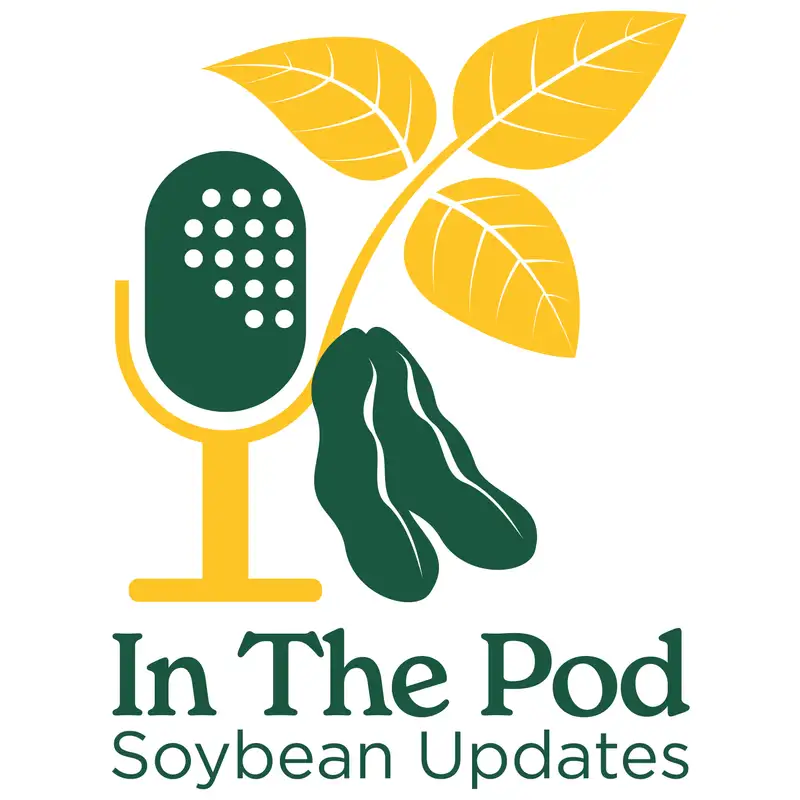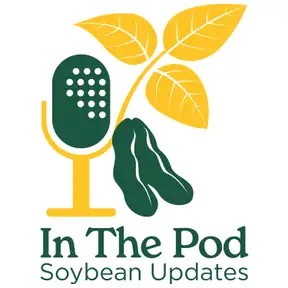05/08/25 Understanding Food-Grade Soybean Premiums and Crop Insurance
You're listening to In The Pod, soybean updates, a weekly trek into the latest soybean information from NDSU Extension. Not all soybeans are treated the same. Food grade soybeans have a much different market and specialized crop insurance. Here to walk us through is Scott Sinner, vice president of the supply chain for SB&B. Scott, when it comes to food grade soybeans, how do the premiums develop?
Scott Sinner:You know, Bruce, we've been in the food grade market for thirty five years as a company, and we get questions all the time on, you know, how do you figure out your premium? You know, what are you doing? Why do these premiums change every year? There's a couple of major things that go into a soybean premium. Number one is the Chicago board of trade price. Number two is the market that the soybeans are getting sold into. So for example, if we're contracting a tofu type soybean or a natto type soybean, those markets are generally higher margin markets, and we can pay a higher premium for those soybeans back to the farmer. But where you usually get the most fluctuation year in, year out is because of Chicago board of trade. You know, obviously, Chicago board of trade prices go up, k, the premium becomes a lower percentage of that Chicago board of trade price if you don't have the premium go up with it. And so all the time when when Chicago board of trade goes up, our premiums go up with it. It's a percentage of Chicago board of trade. But when Chicago board of trade comes down, it's the same thing. The premium comes down some because it's a percentage of the Chicago board of trade. The growers very much appreciate it, obviously, when the premium goes up with Chicago because it has to. Well, the customers expect the same thing on the other side. Right? And so when you think about it, you know, that's where you see some of that fluctuation. You know, it's really important for the farmers to understand that, at least for our company, that we're not just out contracting willy nilly and hope to god that we sell these beans once they're in the bin. Like, everything that we're planting right now is already sold for next year. And so when we're having these conversations, we're having these sales conversations with these customers, and understand, we're asking these food companies to try to predict how much they're gonna need a year and a half in advance, you know, because we've got an entire growing season to get through. We're setting these prices, but we're trying to be obviously fair to both sides. And quite frankly, I feel like because we farm as well, we have a pretty good handle on what those bottom lines need to look like for producers.
Bruce Sundeen:Farmers make use of crop insurance for commercial soybeans. What about food grade soybeans? How different is the crop insurance?
Scott Sinner:Yeah. You know, Bruce, this kinda came about, I don't know, ten, twelve years ago. There's a perception out there that food grade soybeans don't yield as well as commercial soybeans. And and quite frankly, while there are some that that is the case, there's also some that yield very, very well or right with what guys are doing. For a few years there, it is almost becoming a barrier to entry of the market because guys were seeing their APHs go down when they're raising whether it's natto type soybeans or or some of these other lower producing soybeans. You know, as a farmer, like I just said, we farm too. No farmer likes to see their APHs go down because that's just less coverage. So we went to work with RMA, and now there's food grade crop insurance. What I'd like the farmers to realize and understand that when a farmer's insuring their soybeans, it's still just soybeans irrigated or non irrigated. There's enterprise and there's optional. That's still the same. But if there's a loss realized, then you revert back to their food grade crop insurance coverage, and it's actually true revenue coverage because you can ensure your premium on top of the revenue price. And so it's a great way. It's a separate APH, so it doesn't affect your APH for your other beans. It's a great way for farmers to enter the market, be a part of the market, capture the additional value. Maybe not do it on all their acres if that's fine, and I understand that. I mean, probably 85% of all of our farmers that raise soybeans for us do both commercial and then food grade. And so it allows the farmer the option to pick and choose which ground is gonna be best and make it work for their operation.
Bruce Sundeen:Thanks, Scott. Our guest has been Scott Sinner, vice president of the supply chain for SB&B. You're listening to In the Pod, soybean updates, a weekly trek into the latest soybean information from NDSU Extension supported by the North Dakota Soybean Council.

